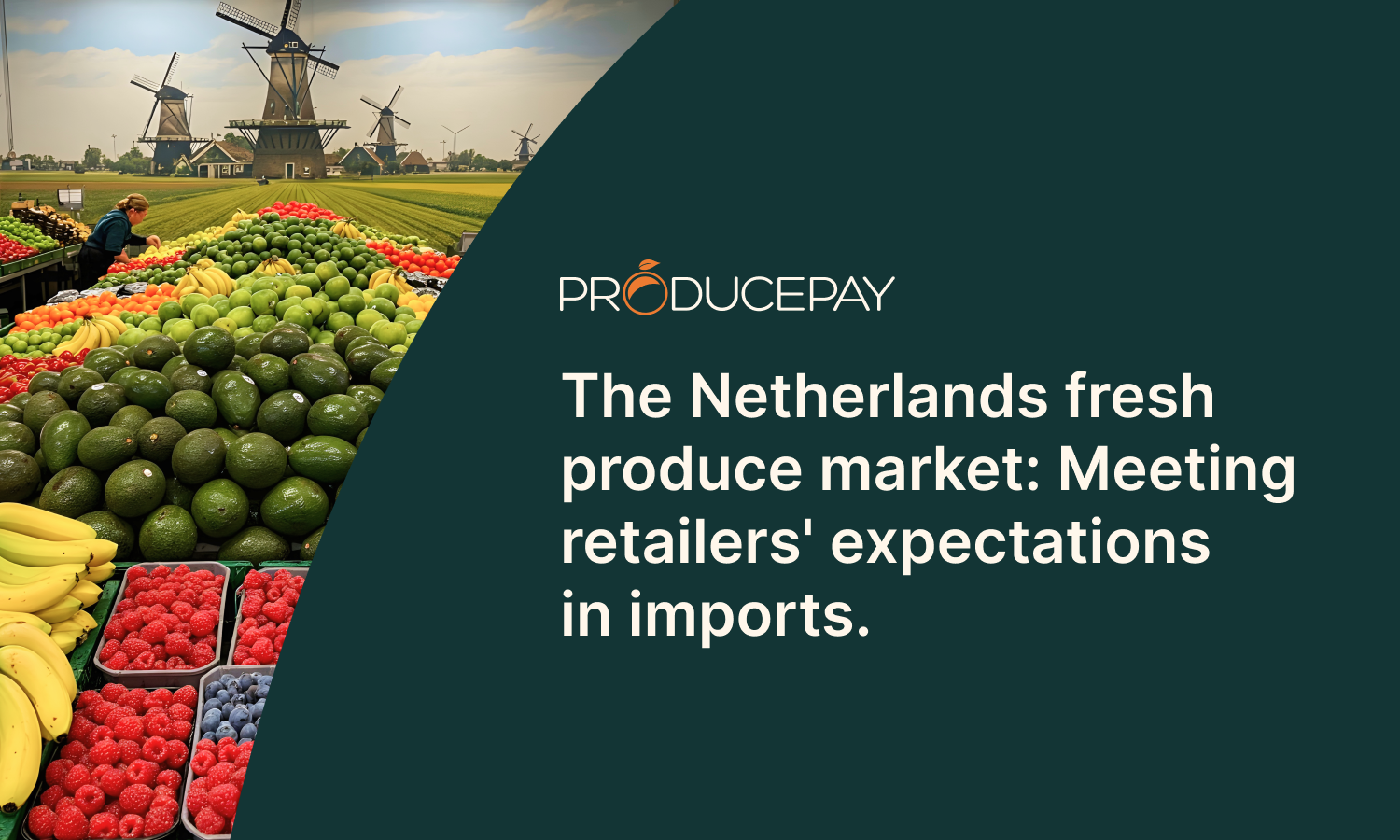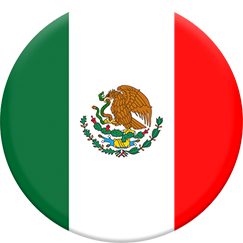
The Netherlands fresh produce market: Meeting retailers’ expectations in imports
The Netherlands plays a crucial role in the European fresh produce supply chain, acting as a distribution hub for the rest of the continent. Each year, European imports of fruits and vegetables total around 55 million tons, with the Netherlands accounting for approximately 20% of these imports.
The Dutch market sources its fresh produce from multiple regions. Countries like Peru, Chile, and South Africa among the largest non-European providers, supplying a variety of commodities such as avocados, blueberries, and bananas, helping meet European demand for tropical and off-season fruits. In 2024, fresh fruit imports into the Netherlands were valued at €7.89 billion, representing more than 9% of the total agricultural import value.
Despite its strong position, the Dutch fresh produce sector faces ongoing challenges in maintaining quality, ensuring supply chain visibility, and complying with European imports regulations. Additionally, evolving consumer preferences and increasing sustainability concerns require importers and marketers to adapt their sourcing and supply chain strategies.
To successfully navigate these challenges while maintaining a competitive edge, Dutch fresh produce marketers can adopt several key strategies.
1. Understanding retailers’ expectations
One of the primary challenges for importers is ensuring that fresh produce meets the strict quality requirements set by retailers. European supermarkets, particularly in Germany—one of the Netherlands’ key trading partners—enforce some of the most stringent regulations regarding pesticide residues. The EU has established Maximum Residue Levels (MRLs), and the Netherlands Food and Consumer Product Safety Authority (NVWA) carries out regular inspections to ensure compliance. Failure to meet these standards can lead to rejected shipments, financial losses, and reputational damage.
Beyond pesticide compliance, retailers prioritize fresh produce that offer uniformity in size, color, and ripeness to provide a uniform experience for consumers. Sustainability and ethical sourcing have also become critical factors, with retailers expecting importers to work with suppliers who implement environmentally friendly farming practices and uphold fair labor standards. Ensuring that suppliers meet these expectations is key to maintaining strong retailer relationships.
2. Fostering strong partnerships with reliable suppliers
Maintaining a steady supply of high-quality fresh produce requires strong partnerships with trusted suppliers. By working closely with reputable growers and exporters, importers can secure a consistent supply of premium fresh fruits like avocados and blueberries.
Transparent communication is crucial in these partnerships. There should be a regular exchange of information with exporters regarding pesticide usage, quality control processes, and logistics to ensure that expectations are met throughout the supply chain.
Also, providing resources and training to suppliers can significantly enhance product quality. Educating growers on best practices in cultivation, harvesting, and post-harvest handling leads to a better consistency and reduces the risk of quality-related rejections upon arrival. Investing in the suppliers can strengthen the sourcing network and improve overall supply chain efficiency.
3. Implementing rigorous quality control measures
Ensuring high-quality fresh produce starts long before the shipment reaches the destination. A comprehensive quality control strategy should be in place at every stage of the supply chain, from pre-shipment inspections to final evaluations upon arrival.
At the origin, quality assessments at farms and packing facilities help identify potential issues before the produce is shipped. During transit, monitoring temperature and humidity conditions is essential to preserving freshness, particularly for highly perishable commodities. Advanced tracking systems can provide real-time updates on shipping conditions, allowing importers to address potential problems proactively.
Upon arrival, conducting detailed inspections ensures that fresh produce meets agreed-upon quality standards before being distributed to retailers. If any discrepancies are found, immediate corrective actions can prevent losses and maintain strong retailer relationships.
4. Leveraging technology for enhanced quality management
Technology is playing an increasingly vital role in the fresh produce supply chain, offering solutions that enhance traceability, quality control, and overall efficiency. Implementing digital tracking systems allows monitoring of produce and ensures transparency at every stage.
Some companies have adopted blockchain-based traceability solutions that provide a secure, transparent record of a product’s journey. These systems integrate consumer apps, web-based dashboards, and supply chain management tools to give retailers end-to-end visibility into their sourcing.
ProducePay takes a step forward with Visibility. By monitoring crop progress , before, during, and after harvest and performing quality checks from the farm through final delivery, this solution provides real-time updates on fresh produce status, enabling informed, timely decisions. Onsite agronomists, real-time order tracking, and Quality Control order management dashboard ensure that quality standards are consistently met.
By leveraging technological and innovative solutions like these, Dutch marketers can not only enhance their quality control measures but also reduce retail rejections, make data-driven decisions, minimize waste, and strengthen their reputation.

5. Diversifying suppliers to mitigate risks
Relying on a single region or country can expose businesses to significant risks, as supply can be disrupted by many factors like adverse climate events, logistical delays, and geopolitical instability. Diversifying suppliers helps mitigate these risks and ensures a steady supply of high quality fresh produce throughout the year.
For example, avocado imports in Europe fluctuate seasonally. During the summer, Peru dominates the market with its abundant Hass avocado production, alongside suppliers from South Africa and Kenya. In the winter months, Spain, Colombia, Mexico, Chile, and Israel become primary suppliers. By sourcing from multiple regions, Dutch importers can select fresh produce of different qualities depending on demand availability to ensure a stable supply, meet retailer specifications, and minimize financial risks associated with regional disruptions.
Ensuring quality in fresh produce imports
For Dutch marketers importing fresh produce, maintaining quality and meeting retailer expectations requires a proactive and strategic approach. Ensuring compliance with European import regulations, building strong supplier partnerships, implementing rigorous quality control, leveraging technology for better traceability, and diversifying sourcing regions are all essential to staying competitive in the market. By adopting these strategies, importers can strengthen their relationships with retailers, reduce the risk of supply chain disruptions, and guarantee a steady flow of high-quality fresh produce year-round.
Take your quality management to the next level. Reach out to our team today.

